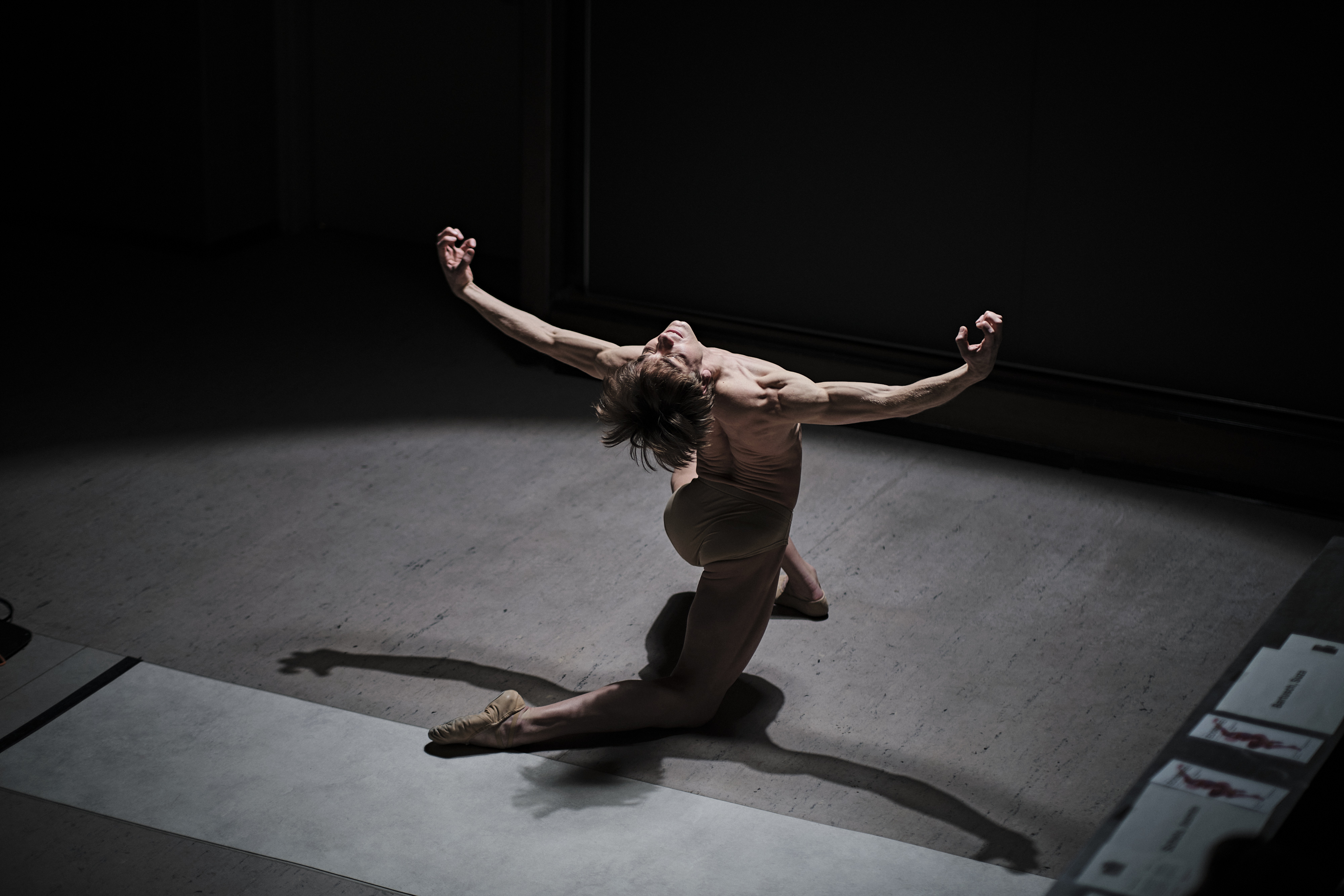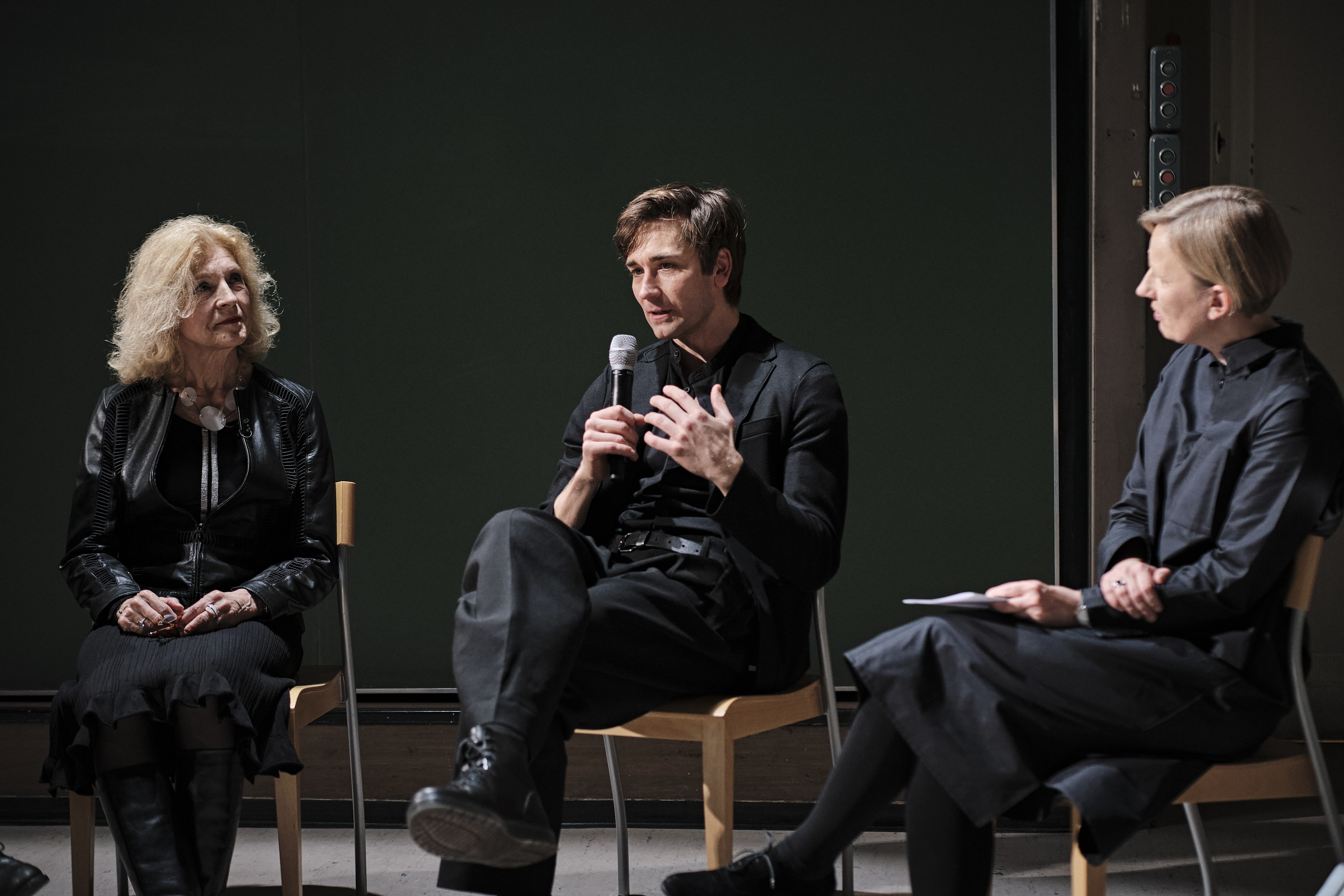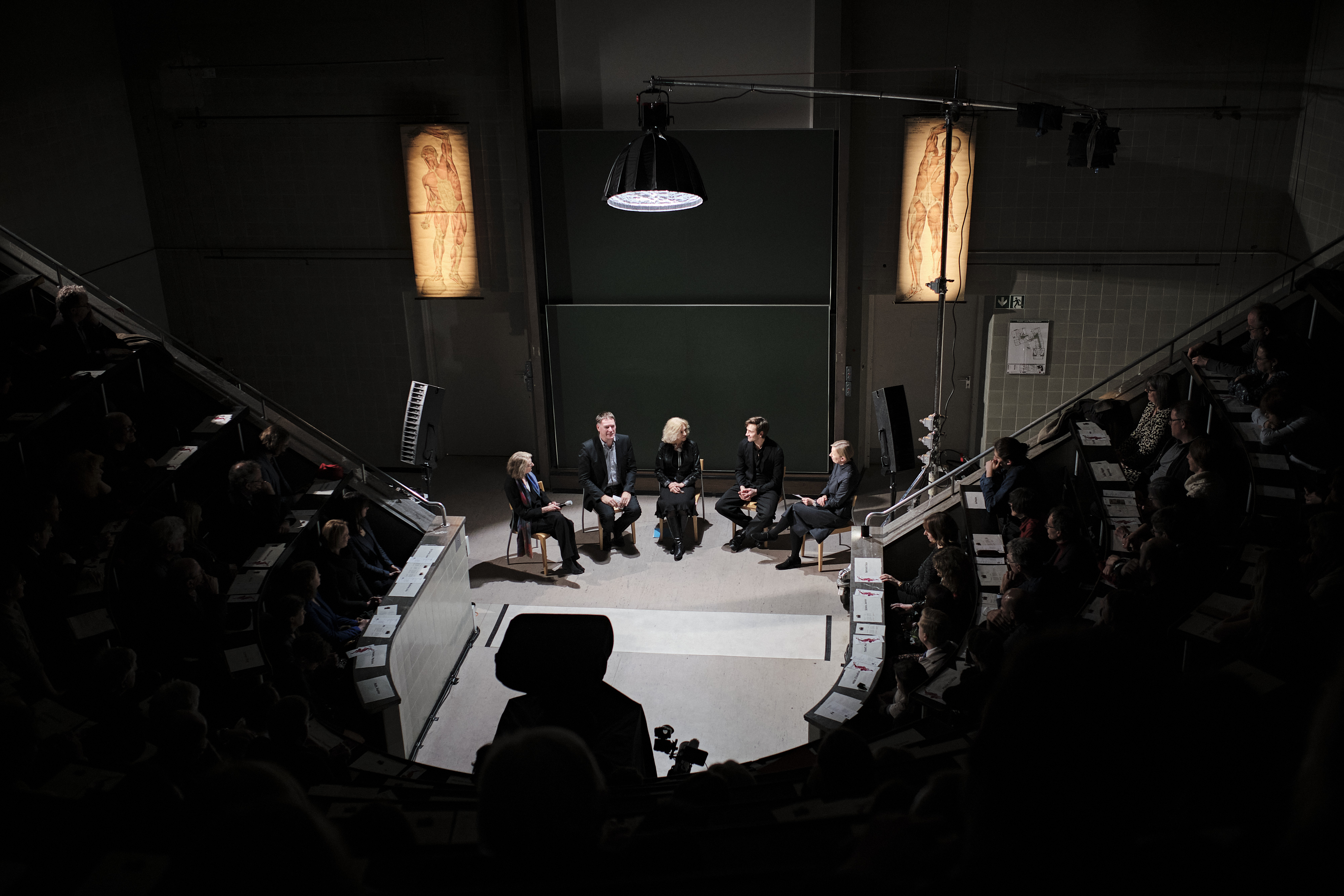The dancer simultaneously transforms and transposes this long tradition of visual representation into an innovative aesthetic form, one which functions as much as an act as it does an artefact. Now, as a modern celebration of the unique sensuality of dance, this art form is able to come to life in a contemporary space of discourse and experience. This is achieved by the dance’s extremely tension-filled union of what would seem to be opposites: morbidity and brilliance, violence and artificiality, deterioration and perfection come together to form something different, something new. Out of the dichotomous tension, a transformation takes place within the medium of dance. The artistically performed (self-)flaying serves as a metaphor for this transformation: the history of an overcoming of the body by the body, the putting forth of one specific physicality by way of another, the development of a new aesthetic form out of cultural memory.
Yet even in the few moments of discernible lightness, the connection to the body, to the work on the body and to the initial violent act of flaying the skin undoubtedly remains visible. As such, the lightness in dance, which is more alluded to than achieved, openly displays its underlying conditions. Such conditions must not be forgotten – they make any lightness precarious, destructible and hardly realisable. The violence of skinning is just as haunting and cannot be shrugged off, as it were. Not in the here and now. Not in our present day.
Thus, out of the écorché that was reflected upon in early artistic practice, a new figure of reflection has emerged – one that not only explores the illustrative potential of modern dance along the border of tradition and irritation, but that also questions traditional notions of beauty, modern body images and especially the boundaries and possibilities of art. This reflection proves worthwhile, including and especially when faced with places of injustice and periods of destruction. In this sense, the performance is as much a process as it is a result of a profound confrontation with pre-modern écorchés. But more than this, it is an attempt to grasp the animated, dynamic, charismatic art form itself, along with its social standing: an anatomy of dance.



